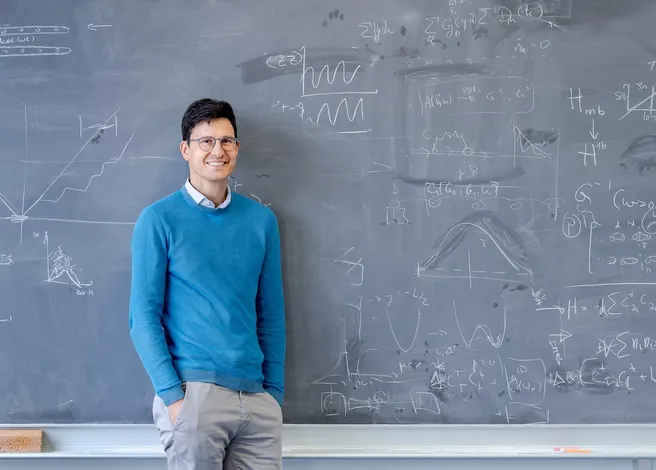For the better part of a century, the quantum objects known as quasiparticles have been all dressed up with nowhere to go. But that may change, now that a team of physicists from TUM School of Natural Sciences and Yale has shown it is possible to exert a greater level of control over at least one type of quasiparticle.
The discovery upends decades of fundamental science and may have wide applications for quantum-related research in the years ahead. A quasiparticle is an “emergent” quantum object — a central, core particle surrounded by other particles that, together, demonstrate properties not found in each component. Quasiparticles have become the central conceptual picture by which scientists try to understand interacting quantum systems, including those that may be used in computing, sensors, and other devices.
But they can be difficult to effectively study, owing to their complex interplay with other particles in quantum systems. “Interacting quantum systems are central players in modern quantum science and technology, but they are challenging to understand,” said Prof. Nir Navon, an associate professor of physics in Yale’s Faculty of Arts and Sciences, member of the Yale Quantum Institute, and principal investigator for a new study in the journal Nature Physics.
“In some cases, interactions merely dress particles and give them new acquired properties, such as a modified mass, or a longer lifetime — turning them into quasiparticles,” Navon said. “What we’ve done here is demonstrate a new and surprising level of control: using a simple ‘knob’ in the form of an external radio-frequency field, we could manipulate the properties of quasiparticles. It’s a little bit like turning a horse into a unicorn by controllably stirring up dust around it.” Navon’s lab at Yale creates tabletop experiments that simulate quantum phenomena. In doing so, the lab investigates basic science properties of the quantum world and how those properties may be influenced.
For the new study, Navon and his collaborators, including theorist Prof. Michael Knap of the Technical University of Munich, looked at ways to manipulate the properties of a specific type of quasiparticle called a Fermi polaron. Fermi polarons are quasiparticles formed by free-floating impurities that interact with subatomic particles called fermions.
Navon, Knap, and their colleagues devised a highly controlled, “clean” environment in which to observe Fermi polarons. They used laser-manipulated atoms cooled to nanoKelvin temperatures (a nanoKelvin is a billionth of a degree above absolute zero), and precise radio frequency control, to exert a new degree of influence over the quasiparticles.
“Being able to control a quantum system to a high degree, as has been done in this experiment, can lead to new types of quantum states that do not obey the laws of thermodynamics,” Knap said. “It is now our task to research the conditions for realizing such exotic states.”
The findings challenge longstanding notions about quasiparticles and open the possibility of understanding and controlling quantum systems in new ways, the researchers said. “Some of the most interesting and bizarre quantum systems these days are those that actually don’t have quasiparticles,” Navon said. “It would be fantastic to have the ability to controllably destroy – or revive – quasiparticles. The prospect of starting with a quantum system that does have quasiparticles and being able to destroy them using an external field would create a remarkable bridge between quantum systems that are well understood and those that currently elude understanding.”
Co-lead authors of the study are Franklin Vivanco and Songtao Huang of Yale and Alexander Schuckert of the University of Maryland. The research was supported, in part, by the National Science Foundation, DARPA, the David and Lucile Packard Foundation, the Alfred P. Sloan Foundation, the Germany’s Excellence Strategy, and the European Union.
Publication
- Vivanco, Franklin J.; Knap, Michael; Navon, Nir; et al. The strongly driven Fermi polaron. Nature Physics. https://doi.org/10.1038/s41567-025-02799-8
Contact about the research article
Prof. Dr. techn. Michael Knap
Technical University Munich
School of Natural Sciences
michael.knap(at)ph.tum.de
Further information and links
